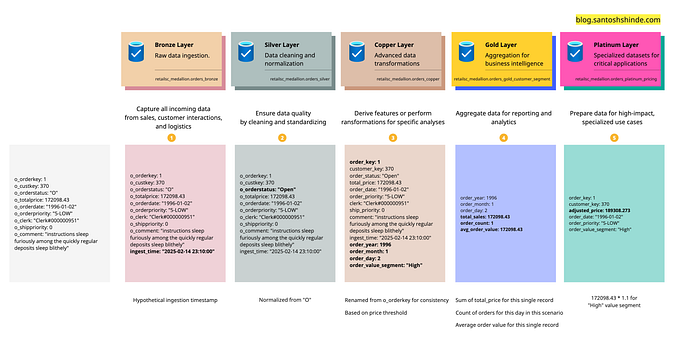
Best Practices for Designing Scalable and Efficient Data Pipelines
Designing data pipelines is an essential aspect of data engineering, enabling organizations to gather, process, and analyze data effectively. As we delve deeper into the world of big data, the need for scalable and efficient data pipelines has never been more crucial. In this post, I’ll walk you through some best practices for designing data pipelines that not only meet today’s demands but also adapt to future needs.
Understanding the Basics of Data Pipelines
Before we dive into the best practices, let’s briefly touch on what a data pipeline is. A data pipeline is a series of data processing steps that involve the collection, transformation, and storage of data. Think of it as a journey your data takes from its source to its final destination, where it can be used for analysis or reporting. A well-designed data pipeline ensures that this journey is smooth, efficient, and scalable.
1. Identify Your Data Sources and Needs
The first step in designing an effective data pipeline is to clearly identify your data sources and the needs of your organization. Are you pulling data from internal databases, external APIs, or streaming services? Understanding where your data comes from and what you need to achieve with it is crucial for determining the pipeline’s design.
Questions to Consider:
- What types of data do I need (structured, unstructured, semi-structured)?
- How frequently do I need to update the data?
- What are the expected data volumes?
By answering these questions, you can establish a solid foundation for your data pipeline.
2. Choose the Right Tools and Technologies
The tools and technologies you choose will significantly impact your pipeline’s performance and scalability. With so many options available, it’s important to select the ones that best fit your requirements.
Data Ingestion Tools
For data ingestion, consider tools like Apache Kafka or AWS Kinesis for real-time data streaming, or Apache Nifi for batch processing. Each tool has its strengths, so choose based on whether you need real-time or batch processing capabilities.
Data Transformation Frameworks
For transforming data, frameworks like Apache Spark or AWS Glue provide robust processing capabilities. They can handle large volumes of data efficiently and support various programming languages, allowing you to write transformation logic in the language you are most comfortable with.
Data Storage Solutions
Finally, consider where you’ll store your processed data. Data warehouses like Snowflake or Google BigQuery offer scalable storage solutions for analytical workloads, while data lakes such as Azure Data Lake Store can handle a mix of structured and unstructured data.
3. Implement a Modular Architecture
A modular architecture breaks down the data pipeline into smaller, manageable components. This approach not only simplifies the development and maintenance of the pipeline but also enhances its scalability.
For instance, you could have separate modules for data ingestion, transformation, and storage. Each module can be developed and maintained independently, allowing you to scale specific components as needed. This design also facilitates easier troubleshooting — if one part of the pipeline fails, you can focus your efforts on that specific module without disrupting the entire system.
4. Design for Scalability
As your data volumes grow, your pipeline must scale accordingly. Here are a few strategies to ensure scalability:
Horizontal Scaling
Instead of relying on a single instance of your data processing tool, consider distributing the workload across multiple instances. For example, if you’re using Apache Spark, you can run your jobs on a cluster of machines, allowing for parallel processing of data.
Load Balancing
Implement load balancing to distribute incoming data across multiple processing nodes. This will prevent any single node from becoming a bottleneck and ensure that your pipeline can handle spikes in data volume.
Auto-scaling
Take advantage of cloud services that offer auto-scaling capabilities. For example, AWS and Azure allow you to automatically adjust the number of resources based on incoming data loads. This feature ensures you’re only using resources when necessary, optimizing costs.
5. Prioritize Data Quality
Data quality is critical for the success of any data pipeline. Poor quality data can lead to inaccurate analysis and decision-making, so implementing data validation checks at various stages of the pipeline is essential.
Data Validation
Set up validation rules to check for data completeness, consistency, and accuracy. For instance, if you’re ingesting customer data, ensure that essential fields like email and phone number are not empty and follow a valid format.
Data Cleansing
Implement data cleansing processes to correct or remove invalid data. This might involve deduplication, normalization, or standardization to ensure that the data used for analysis is clean and reliable.
6. Monitor and Optimize Performance
Once your pipeline is up and running, it’s essential to monitor its performance continuously. Use monitoring tools such as Prometheus or Grafana to track key metrics, including data processing times, error rates, and resource utilization.
Performance Metrics
Establish performance benchmarks to identify areas for improvement. For instance, if you notice that data ingestion times are increasing, it may be time to review your ingestion strategy or scale your resources.
Continuous Optimization
Regularly review and optimize your pipeline. This could involve refactoring code, adjusting resource allocations, or updating configurations to align with changing data patterns and workloads.
7. Ensure Security and Compliance
Data security and compliance are critical considerations when designing your pipeline. Protect sensitive data by implementing robust security measures.
Data Encryption
Use encryption both in transit and at rest. This ensures that your data is secure while being transferred between components and while stored in your databases.
Access Controls
Implement strict access controls to restrict who can view or manipulate data within the pipeline. Use role-based access controls (RBAC) to ensure that only authorized personnel can access sensitive data.
Compliance
Stay updated with relevant data privacy regulations (like GDPR or CCPA) and ensure your pipeline adheres to these regulations. This may involve anonymizing sensitive data or implementing data retention policies.
Conclusion
Designing scalable and efficient data pipelines is a journey that requires careful planning, implementation, and continuous improvement. By following these best practices, you can build pipelines that not only meet your current needs but also adapt to future data challenges.
In the ever-evolving landscape of data engineering, having a solid data pipeline can be the difference between gaining valuable insights and being overwhelmed by the sheer volume of data. So, take the time to invest in your data pipeline today — it’s an investment that will pay dividends in the future!
Feel free to share your own experiences or any tips you have for building effective data pipelines in the comments below. Let’s learn from each other and navigate the data landscape together!








